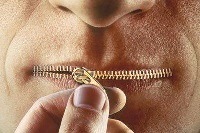Like many I find the “Occupy Wall Street” phenomena a little perplexing especially in Canada where the economy has not slipped too much sideways like in the United States. We have some confused young people and the usual suspects who try to ride the “class warfare” issue like the public sector unions.
With that in mind I have reprinted a great facebook post by Professor David Henderson who is on the Frontier Centre’s expert advisory panel. Simply put, relative to the historical human condition everybody alive today is better off than the class warfare cranks and a gullible media are positing:
But if you take a wider and longer view, you reach a striking conclusion: virtually every American who has heard John Kerry or Al Gore speeches is in the top one percent. This includes the middle-class family from Indiana, the barber in Florida, the K-mart clerk in Oregon, and the Virginia junkyard worker.
Here’s why. Carl Haub, senior demographer at the Population Reference Bureau in Washington, D.C., has estimated that 106 billion humans have been born since Homo sapiens appeared about 50,000 years ago. That means that the richest one percent in history includes 1.06 billion people. There are currently 6.2 billion humans alive, leaving approximately 100 billion who have died. Who among the dead was rich by today’s standards? Not many. Royalty, popes, presidents, dictators, large landholders, and the occasional wealthy industrialist, such as Andrew Carnegie and Leland Stanford, were certainly rich. All told, it is difficult to imagine more than 20 million of these people since ancient Egyptian times. This leaves 1.04 billion wealthy alive today, or 17% of the world’s population.
This is from David R. Henderson and Charles L. Hooper, “The Top One Percent Includes You,” TCS Daily, May 20, 2004.
We go on to say:
The poor in the United States, by contrast, live on up to $23.50 a day. Except for the few hundred thousand who are homeless, the Americans whom the U.S. government defines as poor live exceptionally rich lives. In most ways, their lives are better than those of kings and queens just 200 years ago. Consider the quality and quantity of our food, clothing, refrigerators, televisions, washing machines, stereo systems, and automobiles. King Louis XIV of France had a greenhouse so he could eat oranges. The poor in this country can eat an orange every day, regardless of season. King Edward III of England could summon the royal musicians to play music. The poor in this country have a wide variety of music at their command, 24 hours a day, played note-perfect every time. Edward III lived in a dark, smelly, cold castle. Even the worst houses in this country are more comfortable and have electric lights, too. Care to live without showers and flush toilets? The kings of England and France had to. Next time you see a Shakespeare play in which kings and princes cavort, remember that royalty in Shakespeare’s day had rotten teeth, terrible breath, and body odor that would make you keel over.


